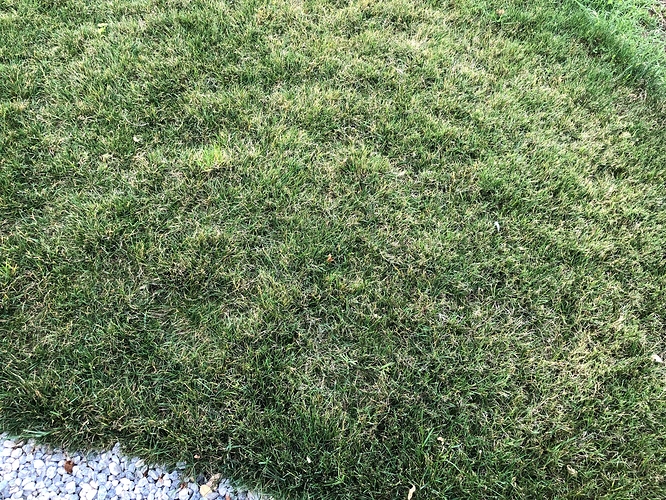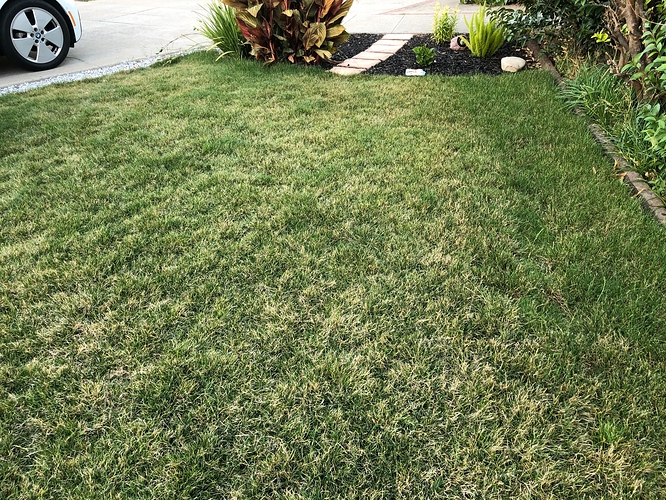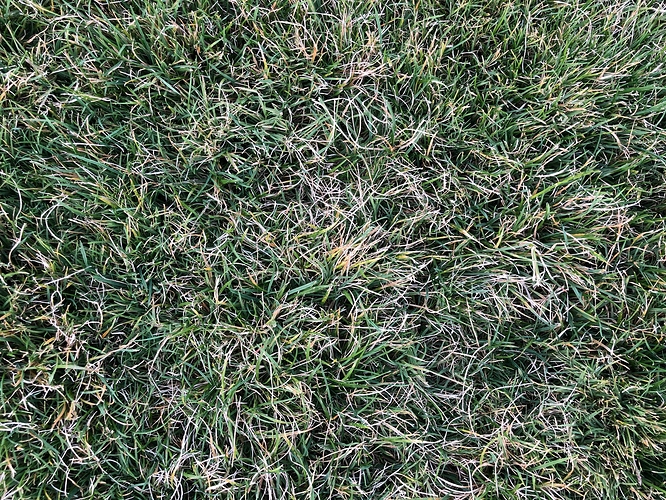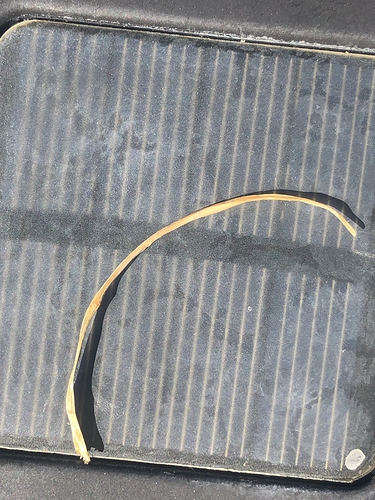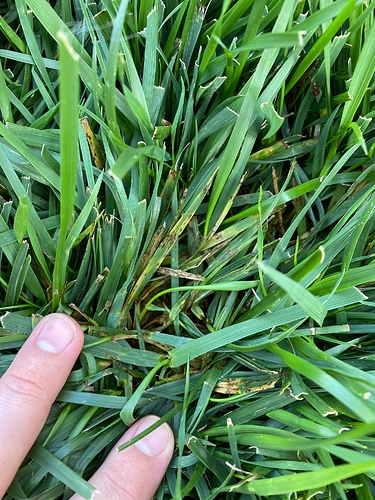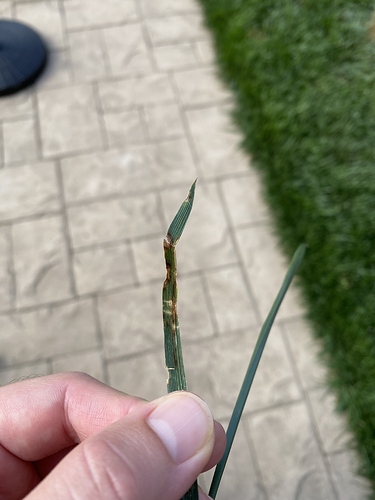Installed new lawn from sod last year around spring and was good and thriving. This year, not so good. It is turning yellowish. It looks like the grass is not really growing. I pretty sure it is getting enough moisture (i can stick 6 inch screwdriver into lawn easily). I have applied Rachio thrive about 2 weeks ago and don’t see any improvements. Any suggestions… what can I do to get my lawn back 
What is your location and what type of grass?
Many of the grass blades have lesions on them which indicates a lawn fungus such as brown patch. Pull up some of the grass blades that are yellowing and look at them closely.
I had this problem with sod years ago. They use so much fertilizer to make them grow fast that when you stop after installing it it has a hard time and can start to die after a while. Thrive is great, but I don’t believe recreate the fertilizers they use at first. I’d find out what the sod company recommends for fertilizer and then use that, and over time you can probably use less and less till you get your lawn to consistently do better with just thrive. That’s the process I used and it’s all healthy now.
It is Fescue purchased at Lowes:
https://www.lowes.com/pd/2-66-sq-ft-Fescue-Sod-Piece/1000443811
I have also made adjustments to my Rachio. Setting. Changed from default 9in Root Depth to 5 inch. I am not sure what to look for on a gras for fungus so I took another picture if that helps.
Looks like it needs fertilizer to me. I think ones with nitrate help green it up as well.
Is it OK to apply fertilizer after Rachio thrive which I did apply 2 weeks ago?
Thanks for the close up image. @inkahauts makes some good points. Sod companies do dump a lot of fertilizer and fungicide on the sod to push growth and keep it healthy.
As a general rule, It’s important to understand the underlying problem before just dumping another product on your lawn. You can pick up a simple soil test or send some to a local lab to see what nutrients your lawn is missing?
For example, if it is brown patch a nitrogen fertilizer will fuel the disease. Also, in the summer heat you don’t want to push a fescue lawn with a high dose of nitrogen.
Did you fertilize your lawn this spring?
Did you apply any fungicides?
For your reference I’m attaching some photos of grass with brown patch in my fescue lawn. Take note of the brown lesions on the blades.
Fescue lawns are susceptible to brown patch. My lawn gets it every year. Fortunately the damage isn’t always permanent and you can oversees thin areas.
I haven’t looked deeply into thrive yet, but from what I’ve read it’s designed to improve and feed your soil which is critical for a healthy lawn. If you determine your lawn does need nitrogen you can still apply a slow release organic fertilizer such as Milorganite.
Thank you for the info. I have applied Milorganite Slow-Release Nitrogen All Purpose fertilizer in late fall early winter (I am in California, we don’t get any freezing temperatures where I am at). Wasn’t sure if it was good idea to apply again in Spring. I have not applied any fungicides. Would you have any suggestions on brand? Also is Milorganite good and effective brand or is there better one I should use?
I had a similar problem with the lawn due to bad fertilizer, when I bought another fertilizer a few months later my lawn was as good as new. So I think you should pay attention to this. Besides, you can contact a specialist who will determine the cause of problems with the lawn and help fix them. Guys, I have a question for you. What tools do you use to care for your lawn other than a lawn mower? I recently looked at the review of weed trimmers on https://homendgarden.com/best-cordless-string-trimmer/ and decided to order one. Please write your feedback about it.

